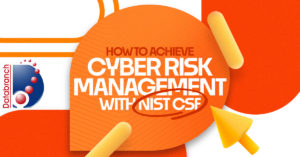
Keeping sensitive data and critical tech safe from cyberattacks is crucial for businesses like yours. Your survival and growth depend on how well your organization can withstand cyberthreats. That’s where cyber risk management comes into play.
Businesses with solid cyber risk management strategies can build formidable cyber defenses and reduce risks without compromising business growth. Besides enhancing security, it also ensures your business stays compliant.
In this blog, we’ll share the core principles of cyber risk management and show you how integrating it with a simple but effective security framework can help you achieve strategic success.
Key Characteristics of Risk-Based Cybersecurity
Risk-based cybersecurity helps organizations focus their efforts and resources on the most critical risks. This approach aims to reduce vulnerabilities, safeguard what matters most to you and ensure you make informed decisions.
Here are the key characteristics of risk-based cybersecurity:
Risk reduction: By proactively identifying and neutralizing threats, you can reduce and minimize the potential impact of a cyber incident.
Prioritized investment: By identifying and assessing risks, you can concentrate your investment efforts on areas that need your attention most.
Addressing critical risks: Dealing with the most severe vulnerabilities first can help you strengthen your business security. That is why it is important to conduct vulnerability assessments regularly, at least every quarter if not more frequently.
All Databranch Comprehensive Care and Foundation Security clients have scheduled automatic patching and Windows updates on their devices to assist with vulnerability management. Visit us here to learn how we can help take this off your IT plate.
Cyber Risk Management Frameworks
Cybersecurity risk frameworks act as a guide that helps businesses achieve the full potential of a risk-based approach. Here are several ways frameworks can help you enhance your current cybersecurity posture:
NIST Cybersecurity Framework
The National Institute of Standards and Technology Cybersecurity Framework (NIST CSF) is a popular, user-friendly framework that empowers business leaders like you to boost organizational cybersecurity. Think of it as a valuable tool created by top security experts to help you protect and secure your digital assets.
Here’s how the NIST CSF supports a risk-based approach:
Secure your Future
Safeguarding your business from cyberthreats is critical for the survival and growth of your business. Don’t leave your business security to chance. Partnering with Databranch as your managed IT provider, means your business will have the security of knowing that your network is being monitored and maintained on a 24/7 basis.
Download our infographic, “Assess Your Cyber-Risks in 7 Critical Steps,” and strengthen your defenses against lurking cyber dangers.
In today’s ever-evolving threat landscape, fortifying your business against cyber-risks is paramount.Assess Your Cyber-Risk in 7 Critical Steps